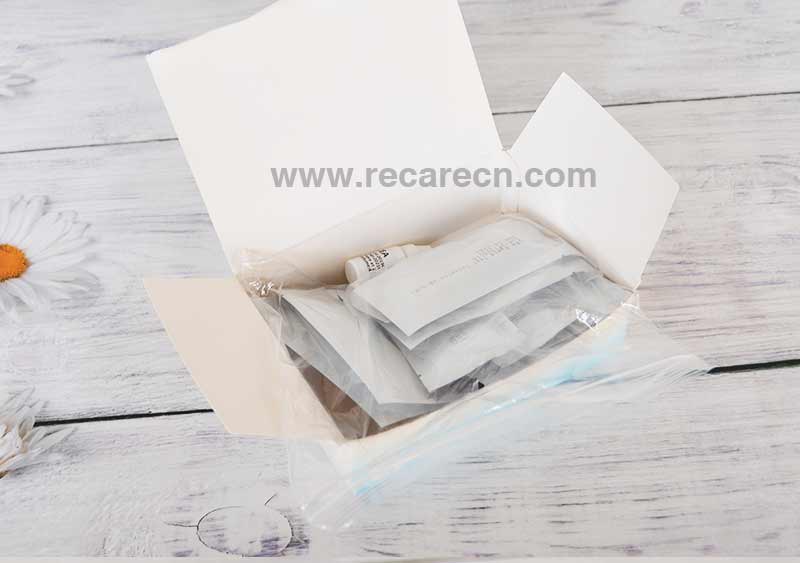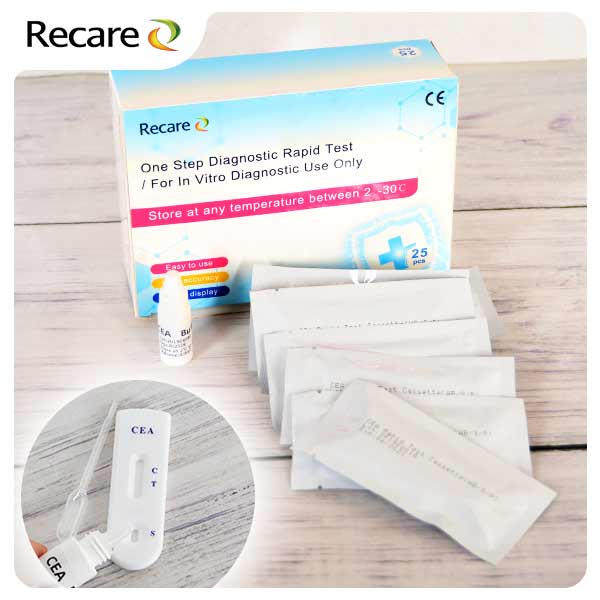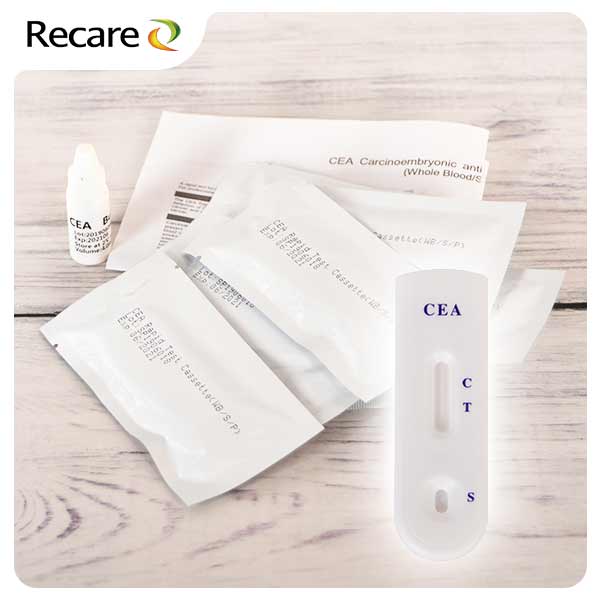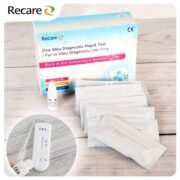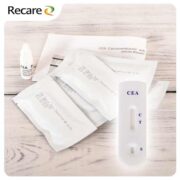Rapid test for qualitative detection of carcinoembryonic antigen (CEA) in whole blood, serum or plasma
Storage and stability:Store in a ziploc bag at room temperature or refrigerated (2-30°C).
- Description
- Inquiry
CEA Rapid Detection Device (Whole blood/serum/plasma) is a rapid chromatographic immunoassay for qualitative detection of CEA in whole blood, serum or plasma.
It helps to assess and diagnose colorectal and other types of cancer, such as pancreatic, stomach, breast, lung, and certain types of thyroid and ovarian cancers.
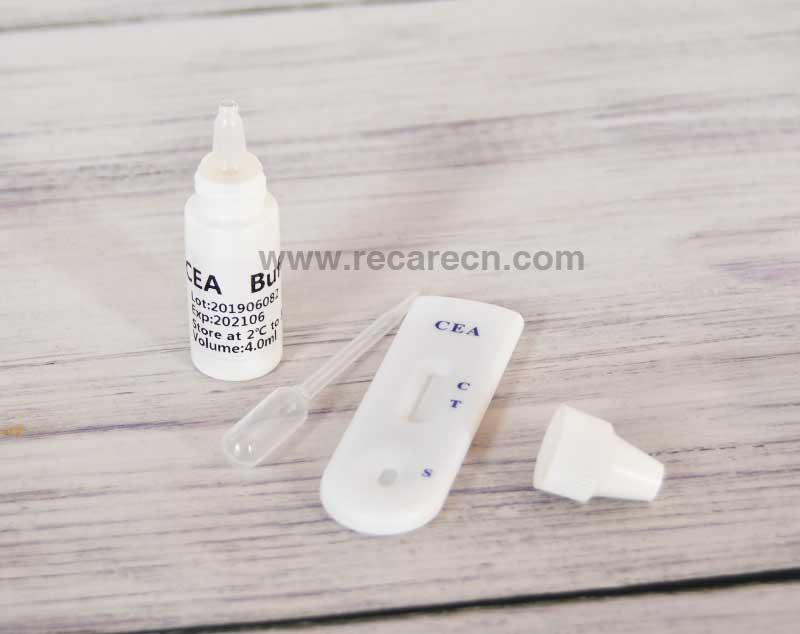
CEA Rapid Test (Whole Blood/Serum/plasma) is a membrane-based qualitative immunoassay for the detection of CEA in whole blood serum plasma. The membrane is precoated with anti-CEA antibody in the detection line area. During the test, the sample reacts with particles coated with anti-CEA antibodies. The mixture migrates up the membrane through capillary action and reacts with the anti-CEA antibody on the membrane to produce a colored line. The presence of this color line in the test line area indicates a positive result, while the absence of this color line indicates a negative result as a control procedure. A color line will always appear in the control line area to indicate that the appropriate volume of samples has been added and the film core suction has been completed.
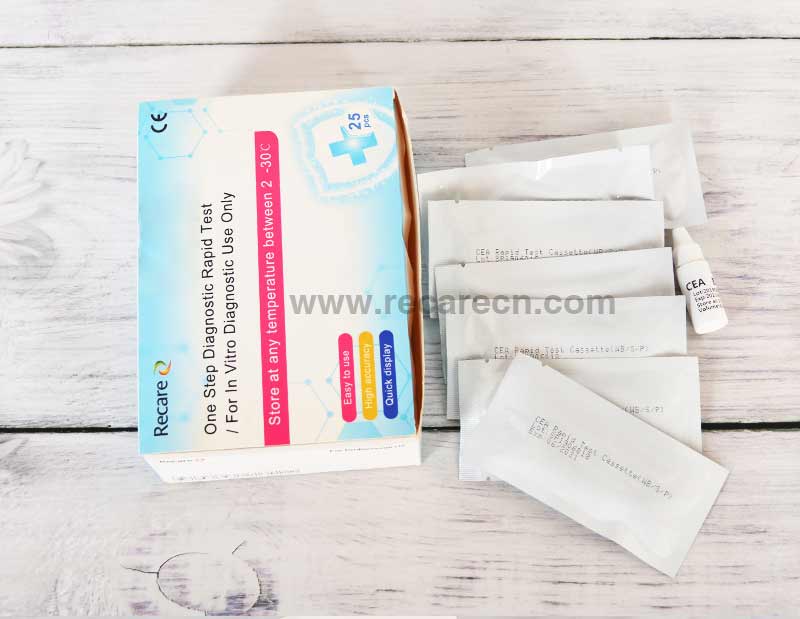
Materials Provided
1. Card test 2. Dropper 3. Buffer 4. Packaging
Instructions for Use
Bring test equipment, samples, buffers, and/or controls to room temperature (15-30°C) prior to testing
Remove the test equipment from the aluminum foil bag and use it as soon as possible. The best results will be obtained if the measurements are made within one hour.
2. Place the test piece on a clean, level surface.
For serum or plasma specimens: Hold the droplet vertically and transfer 1 drop of serum or plasma (about 25 pounds) into the specimen hole (S) of the test unit, then add 1 drop of buffer (about 40 microliters)
For venipentred whole blood specimens: Hold the dropper vertically and transfer 2 drops of whole blood (about 5uL) to the specimen hole (S) of the testing device, then add 1 drop of buffer (about 40pL)
For fingertip whole blood specimens:
Use capillary: about 50 uL fingertip whole blood
Place the sample into the sample hole (S) of the test device. Then add 1 drop buffer (about 40 uL)
3. Wait for the color line to appear. Read the results after 10 minutes. Do not read the results after 15 minutes.
